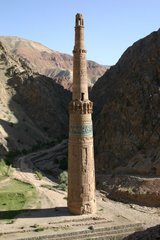 The last week of the season was predictably hectic - apologies for the dearth of new postings.
The last week of the season was predictably hectic - apologies for the dearth of new postings.Left: the happy team, displaying the kites one well-known courier quoted a price of $350 to ship back to the UK.
Below: Iain demonstrates the safe way to fold sheets during the OH&S seminar...

We held four days of seminars on archaeological survey techniques in Kabul University, completed the inventory of 2,400 bags of Kandahar ceramics in Kabul National Museum, and took delivery of 3000 copies of our bi-lingual educational booklets.
Unfortunately, the print-run was poorly supervised and about half of the booklets were sub-standard. We are still waiting for the printers to rectify this.
Other momentous events included DCT shaving off his beard - the jury is still out as to whether this resulted in an improvement or not.
 Despite all the problems we encountered this season, we achieved our primary objective - everyone got home safely, without incident (apart from various credit cards taking a hit in Dubai). The fact that we also managed to get a significant amount of research and documentation done during the month is testimony to the team's hard work and patience, for which Alison and I are very grateful.
Despite all the problems we encountered this season, we achieved our primary objective - everyone got home safely, without incident (apart from various credit cards taking a hit in Dubai). The fact that we also managed to get a significant amount of research and documentation done during the month is testimony to the team's hard work and patience, for which Alison and I are very grateful.



















